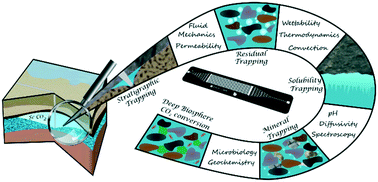Studying key processes related to CO2 underground storage at the pore scale using high pressure micromodels
Abstract
In this review, we present a general overview of the current progress in pore scale experimentations related to CO2 geological storage. In such processes occurring in porous media, most of the phenomena start from (bio)geochemical reactions and transport mechanisms at the pore scale. Therefore, in order to predict the overall consequences of CO2 injection inside a deep reservoir and to ensure a safe installation, it is essential to access pore-scale information for geochemical numerical methods and to improve the understanding of the critical operating parameters. In this view, high pressure micromodels that mimic geological media (Geological Labs on Chip) have recently attracted interest to study multiphase flows and chemical reactivity in porous media. Emphasis is placed on experiments that can be performed in realistic pressure conditions representative of deep geological formations, for accessing information on reactive flows in porous media, mineralization/dissolution, but also (bio)chemical processes. The use of such micromodels continues to broaden the investigation space thanks to the design of in situ characterization techniques. Together high-fidelity data not easily accessed in conventional batch or core-scale procedures is made readily available.



 Please wait while we load your content...
Please wait while we load your content...